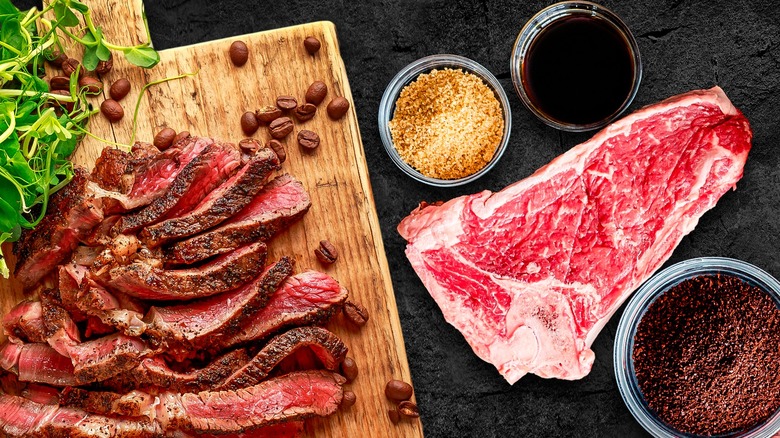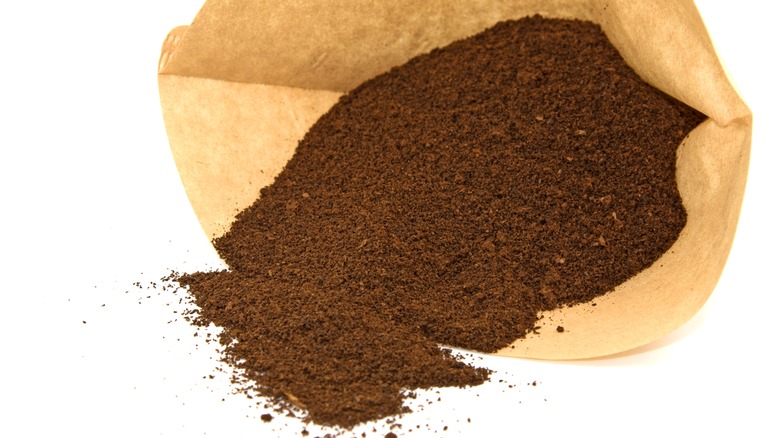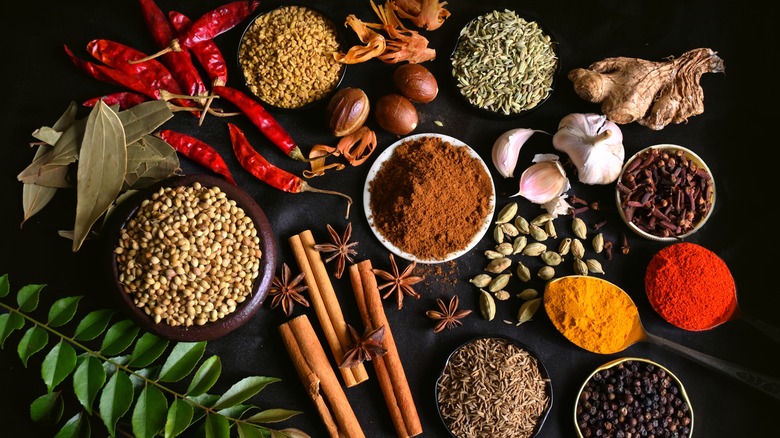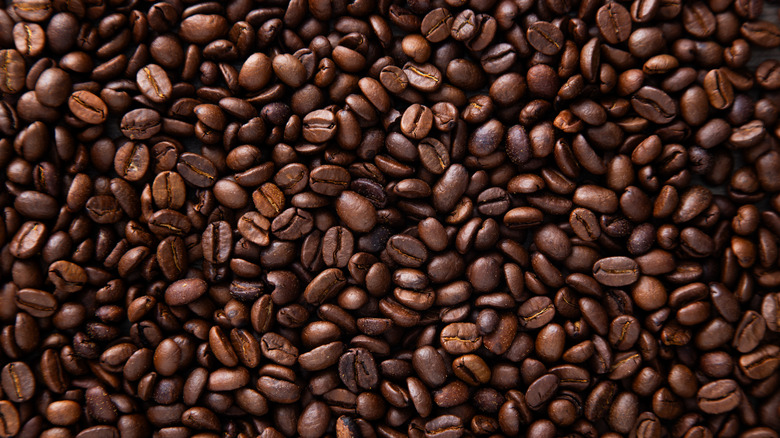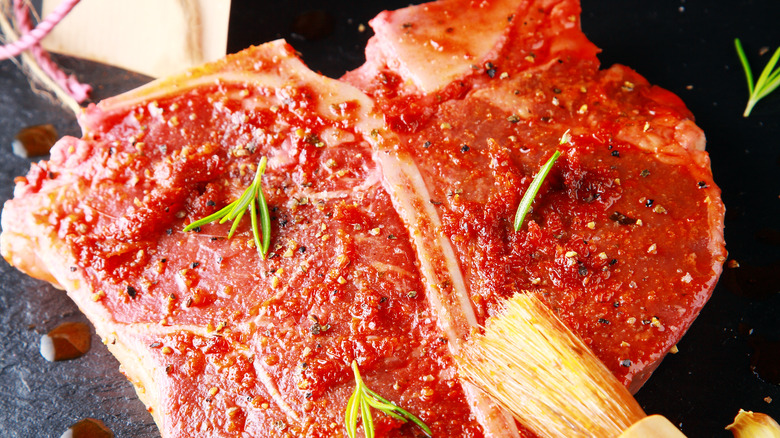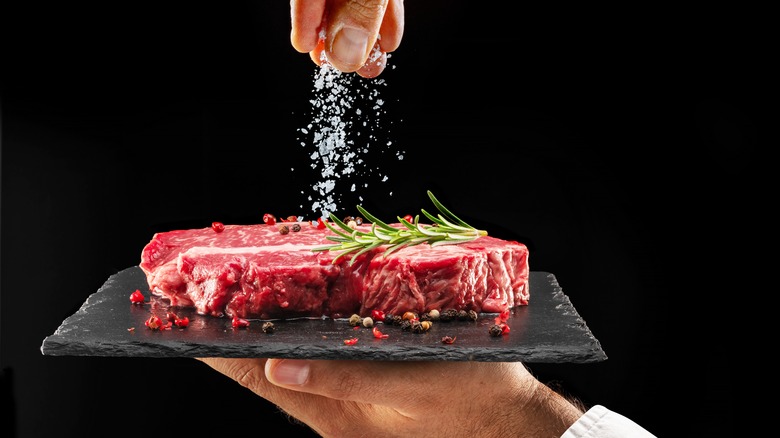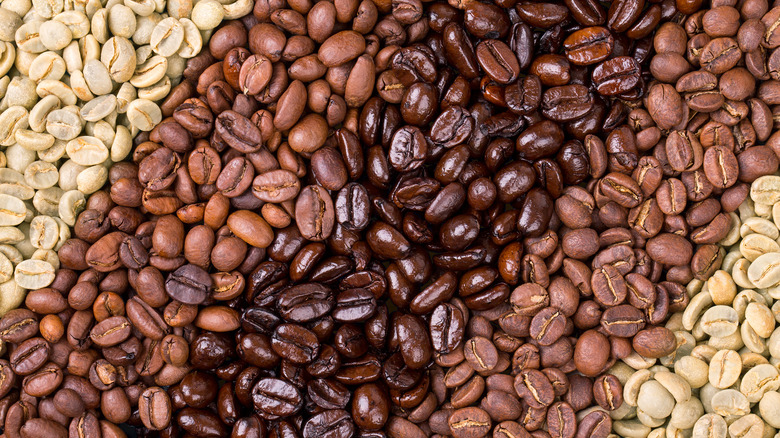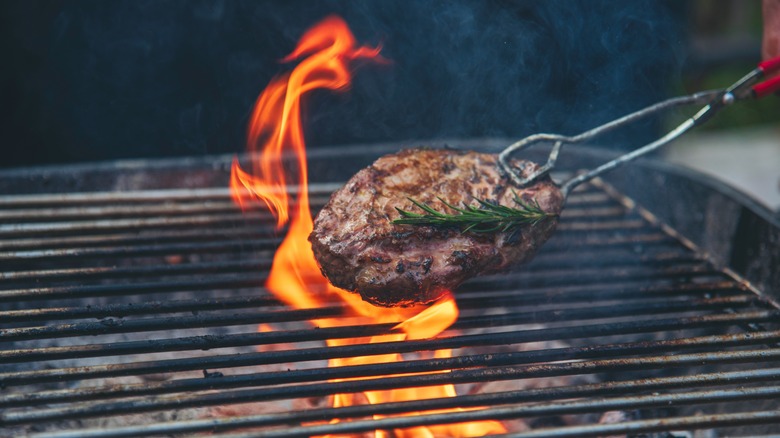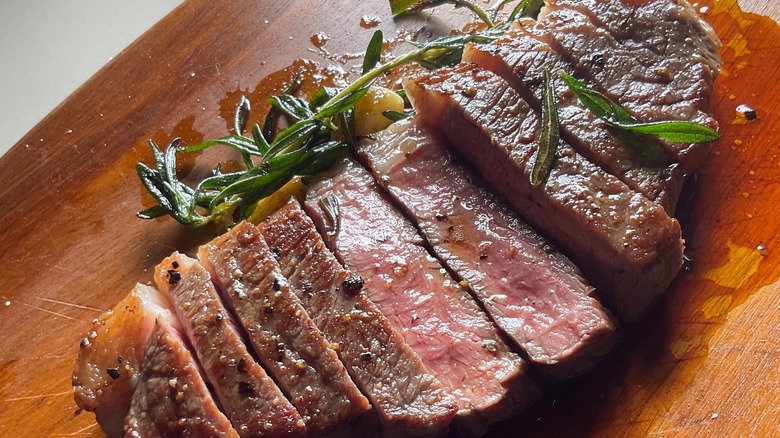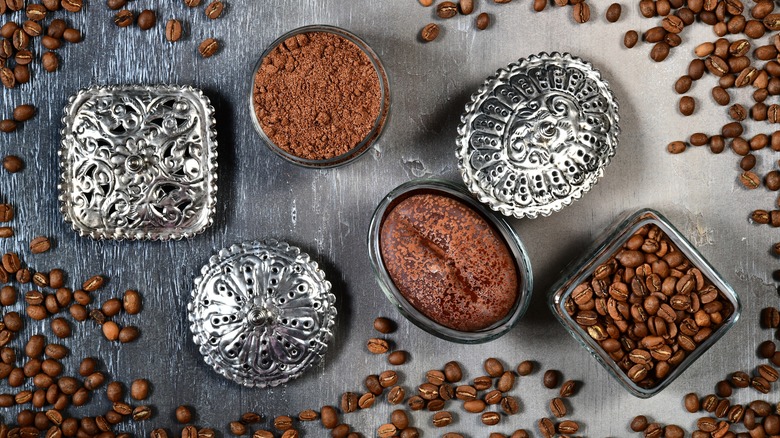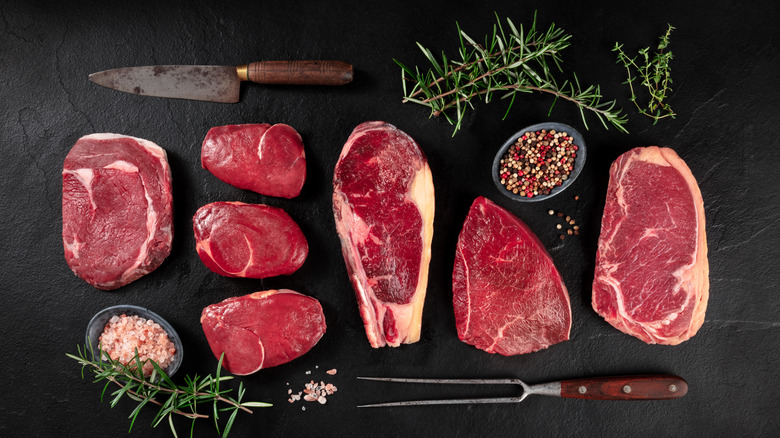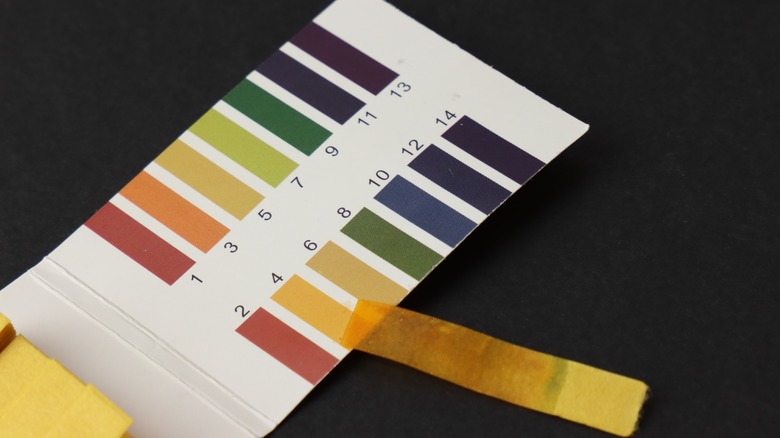11 Mistakes You're Making With Your Coffee Steak Rub, According To A Chef
Coffee rubs can transform your steak from average to unforgettable — but only if you do it right. The richness and depth of coffee bring a smoky flavor that works beautifully with beef, but there are plenty of ways things can go wrong. A too-bitter rub, under-seasoned steak, or flat spices? Not ideal.
If you've tried using coffee in your steak rub and the result didn't quite live up to expectations, you're not alone. It's easy to overlook some small but important details that could make all the difference. Maybe you're using pre-ground coffee that's been sitting around for months, or you're skipping the salt, thinking the coffee will carry all the flavor on its own. Spoiler: it won't.
In my time behind the grill — both professional and at home — I've seen many common mistakes that can easily be avoided. Whether it's using pre-ground coffee that's lost its flavor or forgetting the salt, these small missteps can make or break your dish. I'm here to share what I've learned, so you can skip the trial and error and get your coffee rub just right from the start.
In this guide, we'll break down seven common mistakes people make when working with coffee rubs and, more importantly, how to avoid them. Whether you're new to coffee rubs or just looking to fine-tune your technique, these tips will help you get the most out of this bold, flavorful ingredient. A little attention to detail is all it takes to turn a good steak into a great one. Let's dive in.
Using pre-ground coffee
We get it — pre-ground coffee is convenient. But when it comes to a rub, you want flavor that pops. The problem with pre-ground coffee? It loses its punch fast. As soon as coffee is ground, it starts to oxidize, and that means one thing: stale, lackluster flavor. So if you're using pre-ground beans, your steak rub is missing out on that bold, aromatic richness that freshly ground coffee provides.
Freshly ground coffee beans bring complexity and depth that you just can't get from the pre-packaged stuff. All those essential oils and flavorful compounds? They start fading within minutes of grinding. By grinding your beans just before using them in your rub, you're making sure all that goodness goes straight onto your steak, not into the air. And no, you don't need a fancy grinder — just something that gets the job done.
Not all coffee beans are the same, and the type of bean you choose can have a significant impact on your rub. Arabica beans, known for their sweeter, more complex flavors, are often a good match for leaner cuts of steak like filet mignon.
Think of it like this: you wouldn't use stale spices on your food, so why do that with your coffee? It's the same concept. Fresh beans give your rub the rich, vibrant taste that will complement the natural flavors of your steak, not drown them out. Trust us, your taste buds (and whoever you're cooking for) will notice the difference.
Not toasting your spices
When it comes to spices, skipping the toasting step is like leaving a movie halfway through — you're missing all the good stuff. Raw spices can taste flat, robbing your coffee rub of the complexity it needs to shine. Toasting your spices gently in a dry pan allows their essential oils to bloom, enhancing their natural flavors and making them more aromatic.
It doesn't take much effort either. Just heat a pan over medium heat, add your whole spices (think cumin, coriander, or fennel seeds), and give them a couple of minutes until they start smelling fragrant. Watch them closely — you're looking for a little color, not burnt bits. This simple step transforms your spices from meh to magnificent, giving your coffee rub layers of depth that elevate your steak. Skipping toasting is like leaving flavor on the table. You want each element of your rub to contribute its best, and toasted spices bring a warm, nutty richness that's worth the extra few minutes. Once you try it, you won't want to go back to raw, lifeless spices.
Using too much coffee
Coffee in a steak rub adds rich, bold flavors, but there's a fine line between enhancing your steak and overwhelming it. Too much coffee in your rub can overpower everything else. Coffee is intense — using it in moderation ensures it complements, rather than dominates, the spices and the steak.
To keep coffee flavor in check, balance your coffee with spices like paprika, cumin, or even brown sugar. These ingredients add sweetness, warmth, or smokiness that helps round out the flavors. If you overload the rub with coffee, you run the risk of masking the natural taste of the meat, which is exactly what you don't want. The steak should still be the star of the show, with the coffee enhancing, not overshadowing, its flavor.
The key to balancing a coffee rub is finding the right blend of sweet, savory, and smoky flavors. Coffee already brings a natural bitterness, so offsetting that with a touch of sweetness is crucial. Brown sugar, molasses, or even coffee give steak just the right amount of sweetness without making the rub too sugary. Start with a tablespoon or two of freshly ground coffee, and adjust based on the size of your steak and your other spices. You can always add more, but once the coffee takes over, it's hard to reel it back in. A well-balanced rub hits all the right notes — just enough coffee to bring depth without any bitterness creeping in.
Applying the rub right before cooking
If you're waiting until the last minute to apply your coffee rub, you're missing out on some serious flavor potential. Coffee rubs work best when they have time to penetrate the meat and infuse it with all their delicious complexity. Rubbing it on right before cooking doesn't give the spices a chance to do their job.
For best results, aim to apply your rub at least 30 minutes before you plan to cook, but for even more flavor, go for two hours (or longer). This gives the salt and spices time to work their way into the meat, so you get a steak that's flavorful all the way through, not just on the surface. If you're really planning ahead, rub the steak the night before and let it hang out in the fridge overnight. The results? Next-level. Of course, there's no need to go overboard — just make sure you're giving your rub enough time to settle in before hitting the grill or pan. You'll notice the difference in both taste and texture.
Skipping the salt
Coffee adds bold flavor, but it doesn't take care of seasoning. One of the biggest mistakes you can make with a coffee rub is forgetting the salt. Salt does more than just enhance flavor — it actually draws moisture to the surface of the steak, helping create that perfect crust when it hits the heat. Without enough salt, your steak might taste flat, no matter how much coffee or spice you use.
Salt is what brings out the best in both the steak and the spices, balancing the flavors and elevating the overall taste. If you're mixing it into the rub, be generous but measured — you want to bring out flavor, not overpower it.
When you salt the meat, it draws out some of the moisture, which then dissolves the salt and creates a brine that is reabsorbed back into the steak. This process tenderizes the meat and helps create that beautiful crust you're aiming for when cooking. Without enough salt, your steak may cook up tough, and the rub won't penetrate the surface as effectively.
If you're worried about over-salting, try salting the steak separately from the rub. Whether you mix it into your coffee rub or apply it directly to the meat, just make sure that salt is involved. Salt in your coffee rub the secret weapon behind a steak that's as perfectly seasoned as it is flavorful.
Using the wrong coffee roast
Not all coffee roasts are created equal when it comes to steak rubs. A common mistake is going too dark or too light, which can throw off the balance of your rub.
Let's break down our meat cut by cut. For leaner steaks like sirloin or filet mignon, a light roast coffee is best. These steaks benefit from a touch of sweetness, so incorporating brown sugar or even a bit of cinnamon into your rub can complement the natural flavors without overwhelming them.
For fattier cuts like ribeye, brisket, porterhouse, as well as roasts, you can use darker roasts. These steaks have enough fat and flavor to stand up to a bolder, more intense flavors. Try adding a little cayenne or chipotle powder for some heat, or smoked paprika for extra depth.
The sweet spot? A medium roast. Medium roasts offer a balance of bitterness, acidity, and richness, without stealing the show from the meat. They provide enough depth to complement the steak's natural flavor without overwhelming it. If you're experimenting with different coffee varieties, start with a medium roast and adjust from there based on your personal taste. Remember, the goal is harmony — let the coffee enhance, not overpower, your steak. Pick the roast that plays well with the meat and spices for a perfectly balanced bite.
Cooking at heat levels that are too high
High heat can ruin a good coffee rub in no time. If you're cranking up the grill or stovetop too much, you risk scorching the coffee — and nothing tastes worse than burnt coffee. That bitter, charred flavor overpowers the steak and leaves you with a less-than-pleasant bite.
The trick is to find that balance between getting a great sear and not burning the rub. Medium-high heat is your sweet spot. This gives you a nice crust without turning your coffee rub into a burnt mess. If you're cooking on a grill, use indirect heat to avoid flare-ups that can torch your rub. The goal is a beautiful, flavorful crust, not a bitter, burnt one.
Pan-searing works wonders for a coffee rub too. A cast-iron pan is your best friend here, as it retains and evenly distributes heat. Start the steak on high heat to get that initial sear, then lower it to medium heat to finish cooking. You could also reverse sear, finishing off with the higher heat at the end. This allows the rub to form a perfect crust without burning.
If you have access to a smoker, coffee rubs pair beautifully with a slow-smoked steak. The lower, consistent heat gives the coffee time to infuse the meat without any risk of burning. Use woods like hickory or mesquite to enhance the smoky notes of the rub even further.
Not letting the steak rest after cooking
Cutting into your steak right after cooking is a sure way to lose all those delicious juices — and flavor. When steak comes off the heat, the fibers are still tight, and the juices are near the surface. Slicing in too early causes those juices to spill out onto your cutting board, leaving you with a drier, less flavorful steak.
The solution is simple: let your steak rest for 5 to 10 minutes after cooking. This allows the juices to redistribute throughout the meat, ensuring every bite is as juicy and flavorful as possible. Use this time to finish preparing sides or set the table. The difference it makes is worth the wait.
Letting your steak rest might seem like a small step, but it's key to locking in all the flavor you've worked to build with your coffee rub. Be patient — your steak will thank you for it. Once your steak has rested, don't forget about how you slice it. Cutting against the grain is critical for ensuring tenderness.
By slicing against the grain, you shorten those muscle fibers, making the steak much more tender and easier to eat. A good way to visualize this is by looking at cuts like flank steak or skirt steak, where the grain is easy to spot. After your steak has rested, simply cut perpendicular to those lines to ensure a melt-in-your-mouth bite every time.
Only using coffee as a rub
Coffee in a rub is great, but if you're only using it there, you're missing out on some serious flavor potential. Coffee is versatile — it can add depth to sauces, marinades, and even brines. Limiting it to just the rub means you're not taking full advantage of what coffee can do.
Try adding a bit of brewed coffee to your steak marinade for an extra boost of flavor before you even apply the rub. Or consider a coffee-infused sauce to drizzle on the steak after cooking. The key is to think beyond just the rub — coffee can work its magic in other ways, too.
Experimenting with coffee in sauces or marinades opens up a whole new world of flavor combinations. You get the richness of coffee, but without the risk of it overpowering the meat. And since it's used in a liquid, it can blend smoothly with other ingredients, enhancing the overall dish rather than competing with it. So, don't stop at the rub — let coffee take center stage in more than one way.
If you're a fan of BBQ, try making a coffee-infused BBQ sauce to complement your coffee-rubbed steak. Start with a basic sauce recipe — ketchup, apple cider vinegar, and a bit of brown sugar — and add a shot of brewed coffee to the mix. Simmer it down until thick and glossy, and you've got a rich, smoky sauce that plays off the flavors of your rub.
Not adjusting for different cuts of meat
Not all steaks are created equal, and neither should your coffee rub be. A mistake people often make is using the same rub for every cut of meat, whether it's a delicate filet mignon or a hearty ribeye.
Filet mignon, for instance, is tender and mild in flavor, so a lighter hand with the coffee rub is key. Too much can easily overpower its delicate texture. This lean, tender cut benefits from a lighter rub, as mentioned before. Pair the coffee with something a little sweet, like brown sugar or a touch of cinnamon, to complement the mild flavor of the meat without overpowering it.
On the other hand, a cut like ribeye or strip steak can handle bolder, more intense flavors. With its high fat content and rich flavor, ribeye can handle a stronger rub. Don't be afraid to add extra coffee or even a bit of chili powder for some heat.
Adjust your rub to the cut of steak you're working with. A lighter rub for lean cuts, and a bolder rub for fattier, more flavorful ones. This simple tweak ensures that the steak and the rub complement each other perfectly.
Ignoring coffee's acidity
One thing many people overlook in a coffee rub is coffee's natural acidity. This is a good thing, since the acidity helps tenderize the meat. But, some online recipes will tell you that you need not worry, and that you can't possibly add too much coffee, but in my experience, this isn't the case. As with any spice, you can definitely overdo the coffee. This is especially important when you're pairing coffee with other strong flavors like vinegar, citrus, or even certain spices. As with anything worth eating, moderation is key. While coffee brings depth and richness, its acidity can clash with certain seasonings or overpower your steak if you're not careful.
The fix? Follow your recipe closely. If you're not sure about how much coffee to add, err on being more conservative. Taste and adjust if you need to. You can also balance that coffee acidity with complementary ingredients like brown sugar, chili powder, or even a bit of smoked paprika. These additions round out the sharpness of the coffee and help create a rub that's balanced and flavorful. Think of it as taming the coffee's intensity to play nicely with the other elements in your dish.
Without this balance, you could end up with a steak that's more sour than savory. So next time you're crafting a coffee rub, pay attention to its acidity and how it interacts with the rest of your spices.
